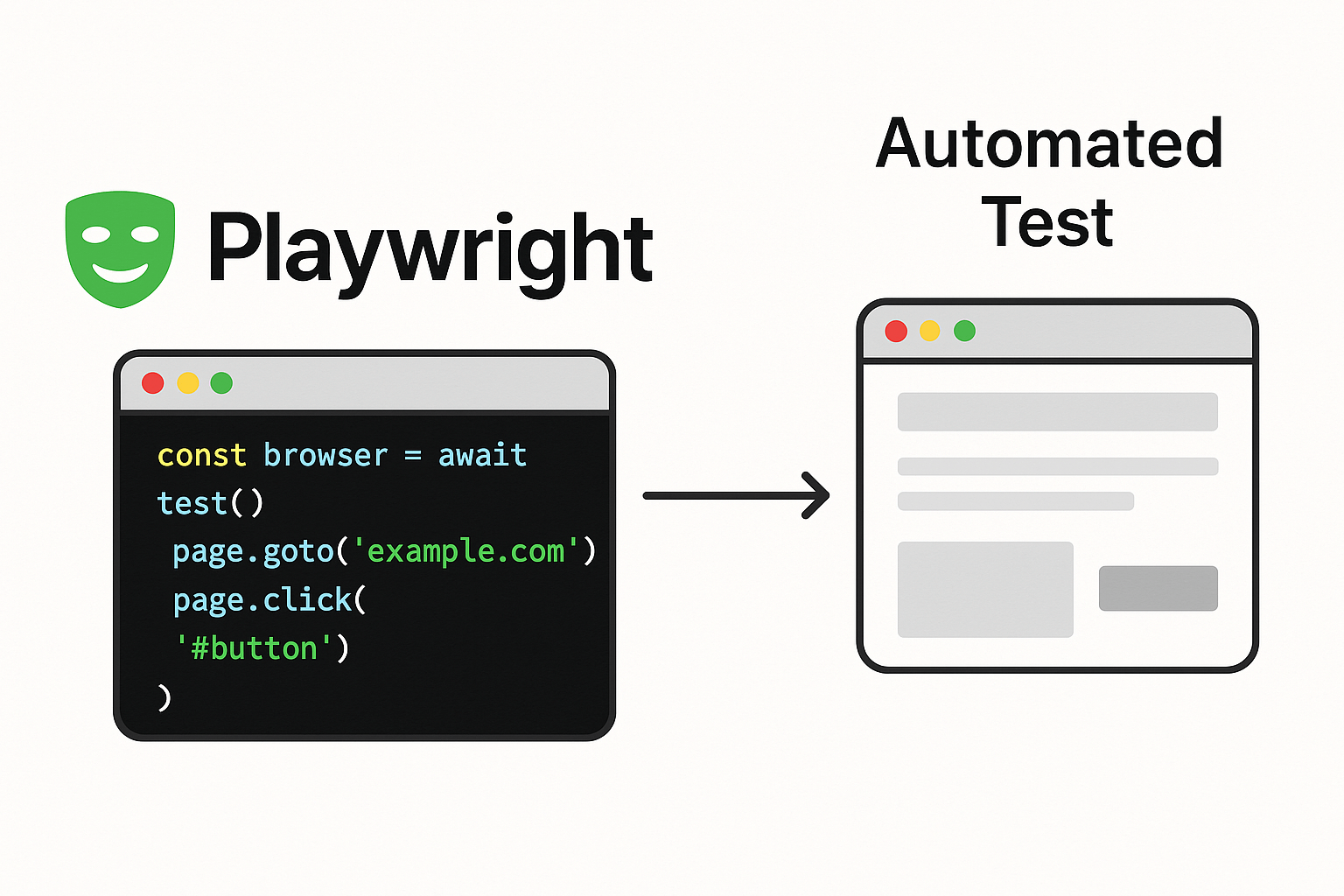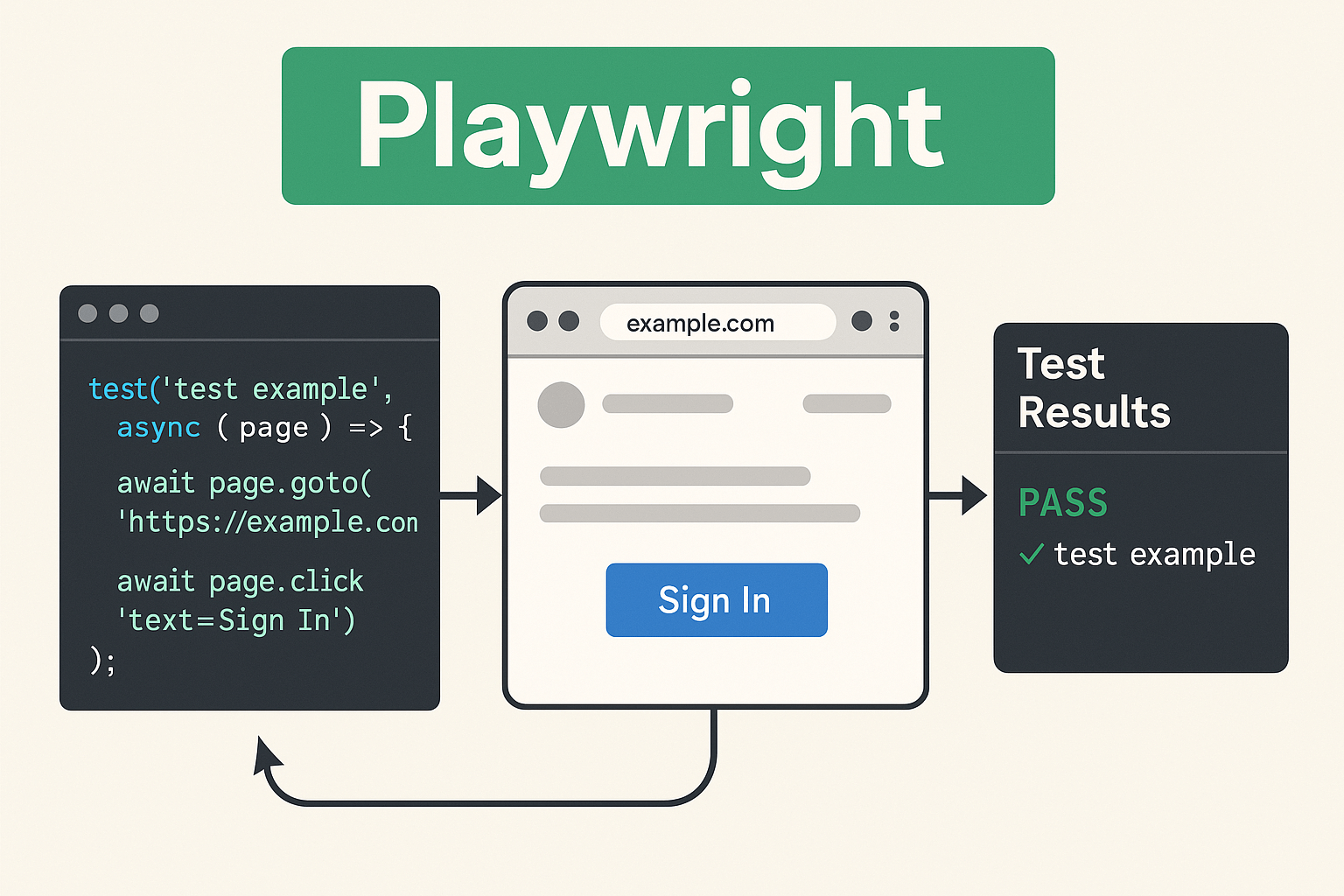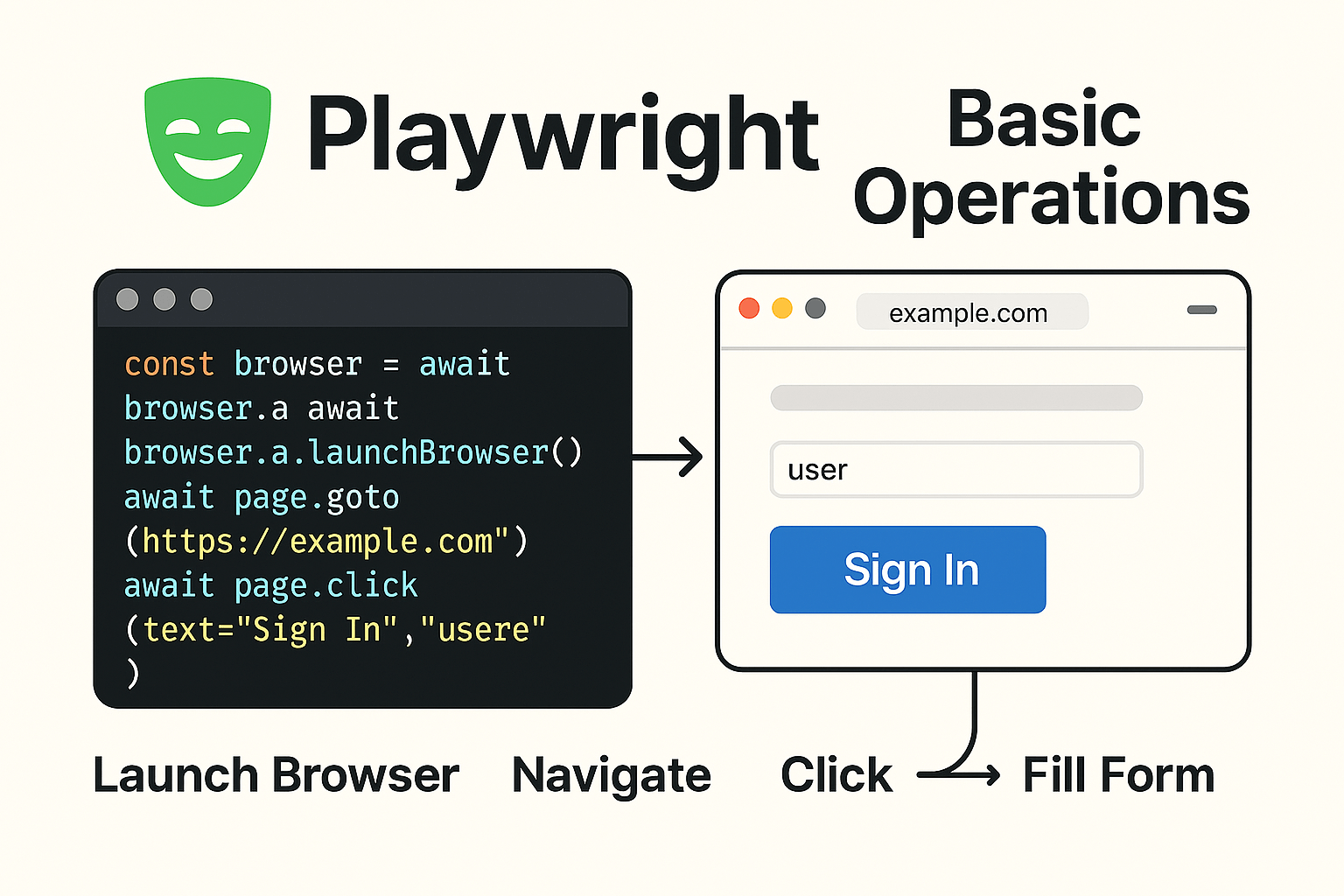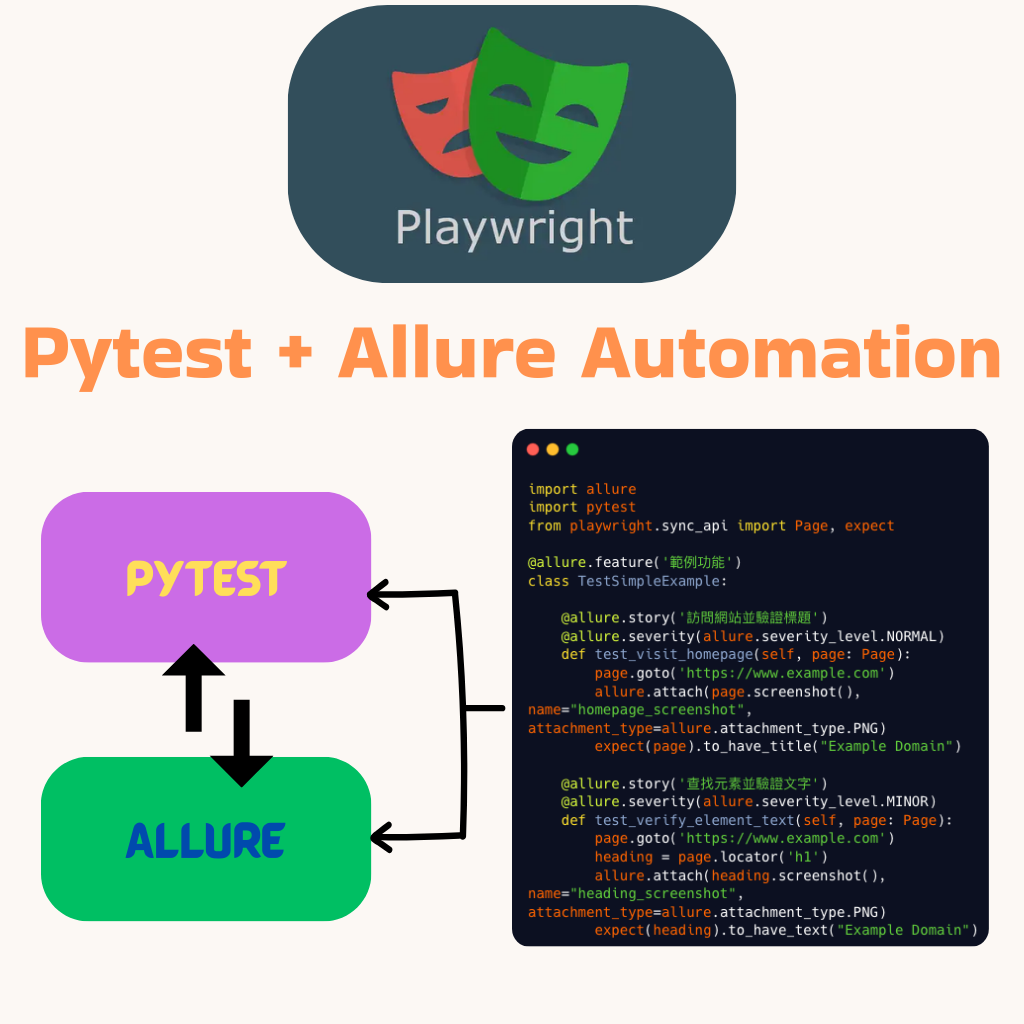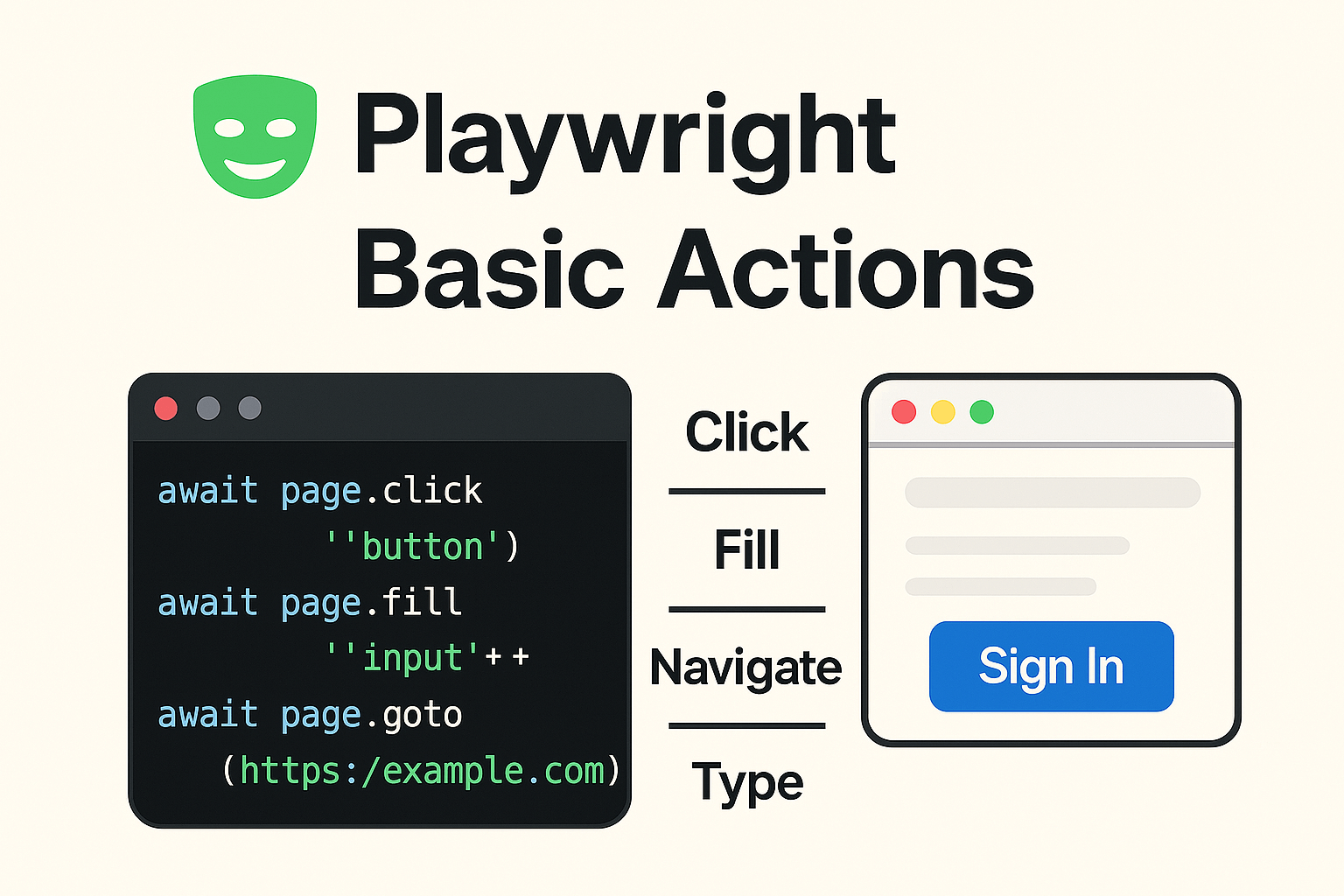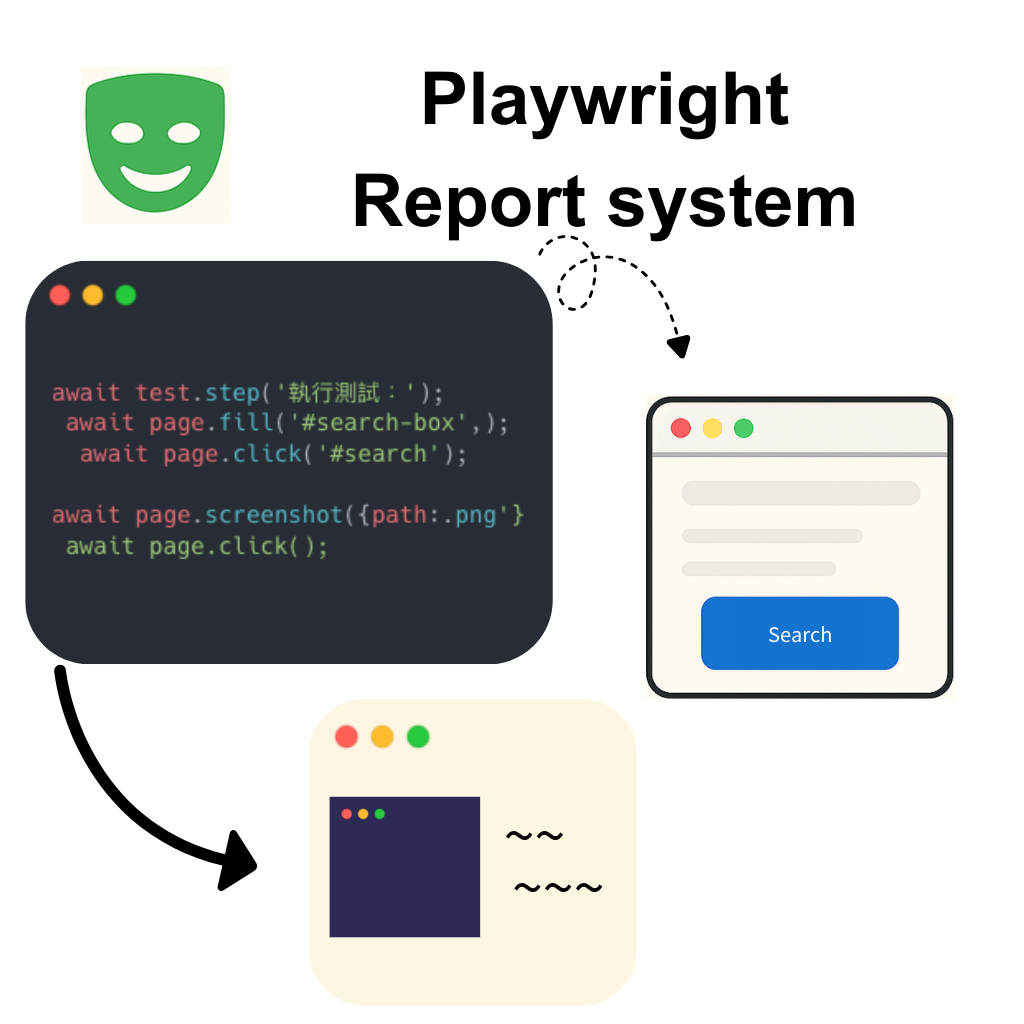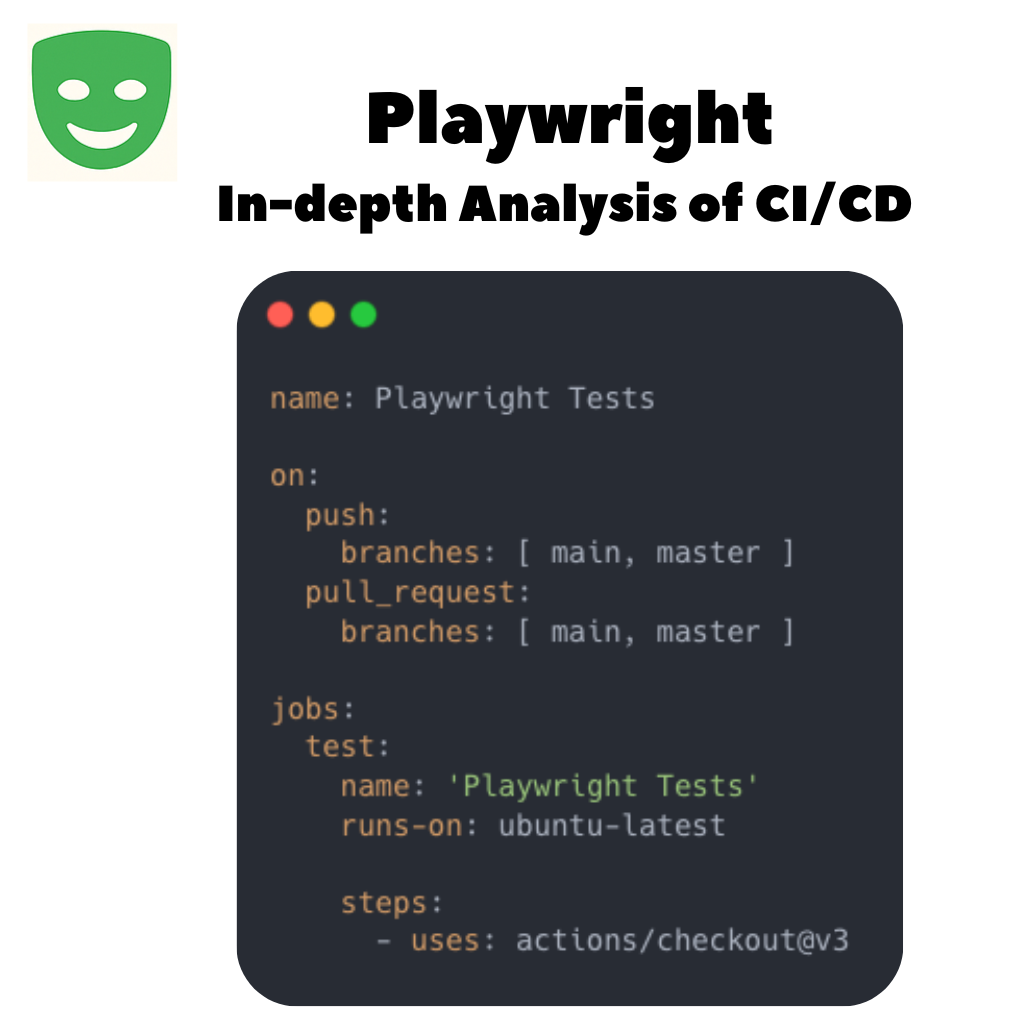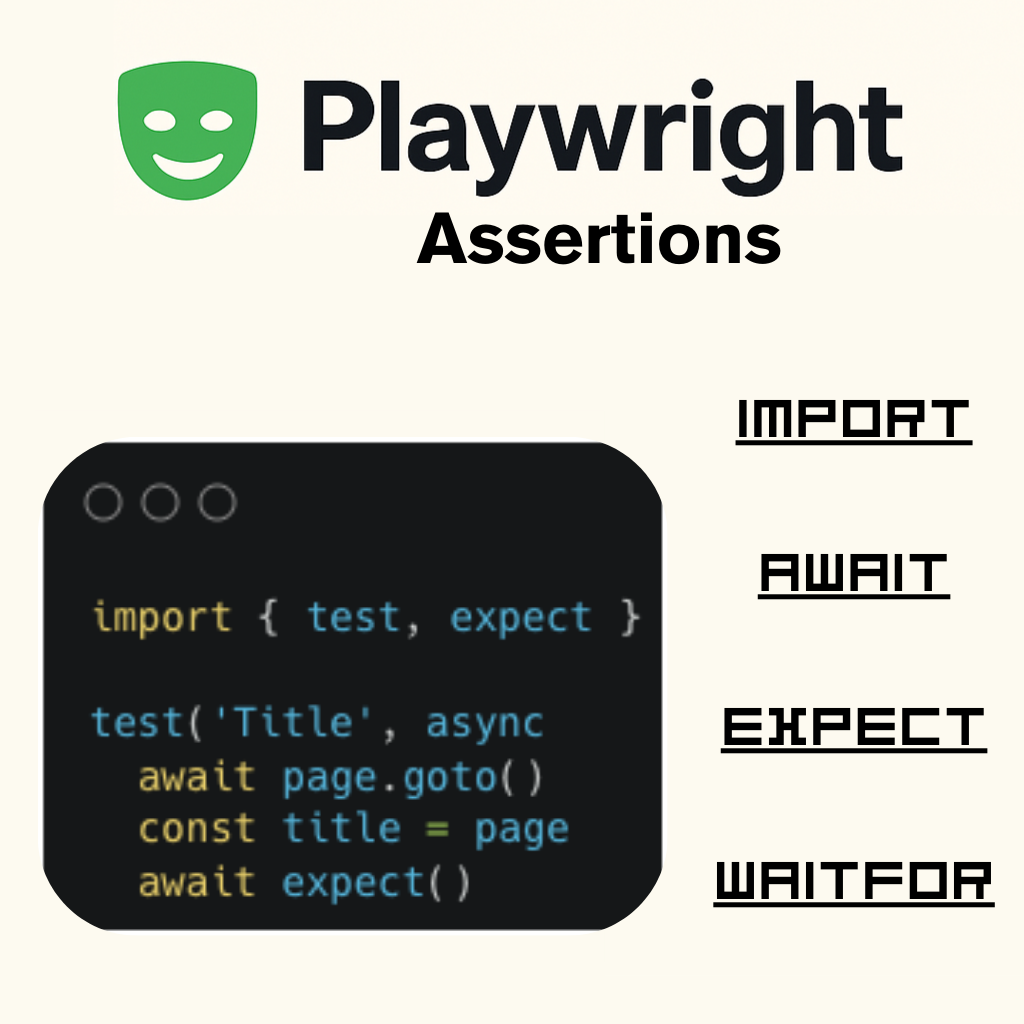Playwright進階篇(五):自動化截圖與錄影

1. 提高測試執行速度
目的
提高測試執行的效率,縮短整體測試時間,並最大化系統資源利用率。
核心策略
- 利用並行測試技術
- 分散測試執行負載
- 優化測試執行流程
import multiprocessing
import time
from concurrent.futures import ThreadPoolExecutor, as_completed
class ParallelTestExecutor:
"""
並行測試執行類別
此類別負責管理和執行測試用例的並行處理,
提高測試效率並充分利用系統資源。
"""
def __init__(self, test_suite):
"""
初始化並行測試執行器
Args:
test_suite (list): 測試用例列表
"""
self.test_suite = test_suite
# 自動偵測CPU核心數
self.cpu_count = multiprocessing.cpu_count()
def execute_tests_in_parallel(self, max_workers=None):
"""
使用線程池並行執行測試用例
特點:
- 動態調整工作線程數
- 追蹤每個測試的執行結果
- 計算總體執行時間
Args:
max_workers (int, optional): 最大工作線程數
Returns:
dict: 包含測試結果和執行時間的字典
"""
# 如未指定工作線程數,預設為CPU核心數
if max_workers is None:
max_workers = self.cpu_count
start_time = time.time()
# 使用執行緒池管理並發測試
with ThreadPoolExecutor(max_workers=max_workers) as executor:
# 為每個測試創建一個異步任務
futures = {
executor.submit(self._run_test, test): test
for test in self.test_suite
}
# 儲存測試結果
results = {}
for future in as_completed(futures):
test = futures[future]
try:
result = future.result()
results[test] = result
except Exception as exc:
results[test] = str(exc)
end_time = time.time()
return {
'total_execution_time': end_time - start_time,
'test_results': results
}
def _run_test(self, test_case):
"""
執行單個測試用例的內部方法
這是一個模擬方法,實際專案中需替換為真實的測試執行邏輯
Args:
test_case (str): 測試用例名稱
Returns:
str: 測試執行結果
"""
# 模擬測試執行
try:
# 這裡應替換為實際的測試執行代碼
print(f"執行測試: {test_case}")
# 模擬測試可能的成功或失敗
import random
if random.random() > 0.2: # 80%成功率
return "PASS"
else:
return "FAIL"
except Exception as e:
return f"ERROR: {str(e)}"
# 使用範例
def test_parallel_execution():
"""
展示並行測試執行的使用方法
"""
test_suite = [
'test_login',
'test_registration',
'test_profile_update',
'test_password_reset',
'test_search_functionality'
]
# 創建並行測試執行器
parallel_executor = ParallelTestExecutor(test_suite)
# 執行並行測試
parallel_results = parallel_executor.execute_tests_in_parallel()
# 輸出測試結果
print("總執行時間:", parallel_results['total_execution_time'])
print("測試結果:", parallel_results['test_results'])
# 如果直接運行此腳本,執行測試
if __name__ == '__main__':
test_parallel_execution()2. 處理大量測試案例
挑戰
當測試套件規模不斷增長時,如何有效管理和執行大量測試。
解決方案
- 實施智能測試分組
- 開發精準的測試選擇策略
- 建立動態測試執行機制
class IntelligentTestSelector:
"""
智能測試用例選擇類別
提供靈活的測試用例篩選和優先級排序策略
"""
def __init__(self, test_suite):
"""
初始化智能測試選擇器
Args:
test_suite (list): 完整的測試用例集合
"""
self.test_suite = test_suite
# 預設的測試重要性權重
self.default_priorities = {
'test_login': 1, # 最高優先級
'test_registration': 2, # 次高優先級
'test_critical_path': 3, # 關鍵路徑測試
'test_edge_case': 5 # 低優先級
}
def select_tests(self,
priority_map=None,
previous_failures=None,
coverage_threshold=0.7):
"""
智能選擇測試用例
策略:
1 優先執行上次失敗的測試
2 根據優先級篩選
3 考慮測試覆蓋率
Args:
priority_map (dict, optional): 自定義優先級映射
previous_failures (list, optional): 上次執行失敗的測試
coverage_threshold (float, optional): 測試覆蓋率閾值
Returns:
list: 篩選後的測試用例
"""
# 使用預設或自定義的優先級映射
priorities = priority_map or self.default_priorities
# 初始化選中的測試用例列表
selected_tests = []
# 優先加入上次失敗的測試用例
if previous_failures:
selected_tests.extend(previous_failures)
# 根據優先級對測試用例排序
prioritized_tests = sorted(
self.test_suite,
key=lambda x: priorities.get(x, float('inf'))
)
# 過濾並加入符合覆蓋率要求的測試
for test in prioritized_tests:
# 假設有一個方法可以計算測試覆蓋率
if self._estimate_test_coverage(test) >= coverage_threshold:
selected_tests.append(test)
return selected_tests
def _estimate_test_coverage(self, test_case):
"""
估算測試用例的覆蓋率
這是一個模擬方法,實際專案中需根據具體測試框架實現
Args:
test_case (str): 測試用例名稱
Returns:
float: 估算的測試覆蓋率 (0-1之間)
"""
import random
# 模擬不同測試用例的覆蓋率
coverage_map = {
'test_login': 0.9,
'test_registration': 0.8,
'test_profile_update': 0.6,
'test_search_functionality': 0.7
}
return coverage_map.get(test_case, random.random())
# 使用範例
def test_intelligent_selector():
"""
展示智能測試選擇器的使用方法
"""
test_suite = [
'test_login',
'test_registration',
'test_profile_update',
'test_search_functionality'
]
# 創建智能測試選擇器
selector = IntelligentTestSelector(test_suite)
# 假設上次這些測試失敗
previous_failures = ['test_profile_update']
# 選擇測試用例
selected_tests = selector.select_tests(
previous_failures=previous_failures,
coverage_threshold=0.7
)
print("選中的測試用例:", selected_tests)
# 如果直接運行此腳本,執行測試
if __name__ == '__main__':
test_intelligent_selector()3. 監控與分析
實施監控的最佳實踐
-
建立基準線
。 確定關鍵性能指標的基準值
。 設置合理的預警閾值
-
自動化數據收集
。 將監控嵌入持續集成流程
。 減少手動干預
。 保證數據的一致性和即時性
-
可視化與報告
。 使用儀表板直觀展示數據
。 定期生成趨勢報告
。 支持多維度圖表分析
-
持續優化
。 定期審查監控策略
。 根據數據洞察調整測試流程
。 建立反饋迴圈,不斷改進
監控的挑戰與解決方案
- 數據過載:精心設計指標,避免收集無意義的數據
- 隱私與安全:嚴格控制敏感信息
- 系統開銷:優化監控代碼,降低性能影響
測試性能監控器
import time
import statistics
class TestPerformanceMonitor:
"""
測試性能監控類別
提供全面的測試執行性能分析和報告生成功能
"""
def __init__(self):
"""
初始化性能監控器
"""
# 儲存每個測試的執行時間
self.test_execution_times = {}
# 儲存測試結果統計
self.test_results_summary = {
'total_tests': 0,
'passed_tests': 0,
'failed_tests': 0,
'skipped_tests': 0
}
def record_test_execution(self, test_name, result, execution_time):
"""
記錄單個測試的執行數據
Args:
test_name (str): 測試用例名稱
result (str): 測試結果 ('PASS', 'FAIL', 'SKIP')
execution_time (float): 測試執行時間
"""
# 記錄測試執行時間
self.test_execution_times[test_name] = execution_time
# 更新測試結果統計
self.test_results_summary['total_tests'] += 1
if result == 'PASS':
self.test_results_summary['passed_tests'] += 1
elif result == 'FAIL':
self.test_results_summary['failed_tests'] += 1
else:
self.test_results_summary['skipped_tests'] += 1
def generate_performance_report(self):
"""
生成詳細的測試性能報告
Returns:
dict: 包含測試執行性能詳細信息的報告
"""
# 計算執行時間相關統計
if self.test_execution_times:
execution_times = list(self.test_execution_times.values())
performance_report = {
# 結果統計
'total_tests': self.test_results_summary['total_tests'],
'passed_rate': (self.test_results_summary['passed_tests'] /
self.test_results_summary['total_tests']) * 100,
# 執行時間統計
'avg_execution_time': statistics.mean(execution_times),
'min_execution_time': min(execution_times),
'max_execution_time': max(execution_times),
'std_dev_execution_time': statistics.stdev(execution_times) if len(execution_times) > 1 else 0,
# 詳細測試執行時間
'test_execution_times': self.test_execution_times
}
else:
performance_report = {}
return performance_report
def performance_trend_analysis(self, historical_data=None):
"""
分析測試性能趨勢
Args:
historical_data (list, optional): 歷史性能數據
Returns:
dict: 性能趨勢分析結果
"""
trend_analysis = {
'performance_changes': {},
'stability_index': 0
}
# 如果有歷史數據,可以進行更複雜的趨勢分析
if historical_data:
# 模擬趨勢分析邏輯
trend_analysis['stability_index'] = self._calculate_stability_index(historical_data)
return trend_analysis
def _calculate_stability_index(self, historical_data):
"""
計算測試的穩定性指數
Args:
historical_data (list): 歷史測試執行數據
Returns:
float: 穩定性指數 (0-1之間)
"""
# 這是一個簡化的穩定性計算邏輯
# 實際專案中需要更複雜的算法
import random
return round(random.uniform(0.6, 0.9), 2)
# 使用範例
def test_performance_monitoring():
"""
展示性能監控器的使用方法
"""
# 創建性能監控器
monitor = TestPerformanceMonitor()
# 模擬測試執行
test_cases = [
('test_login', 'PASS', 0.2),
('test_registration', 'PASS', 0.3),
('test_profile_update', 'FAIL', 0.4),
('test_search_functionality', 'PASS', 0.1)
]
# 記錄每個測試的執行情況
for test_name, result, execution_time in test_cases:
monitor.record_test_execution(test_name, result, execution_time)
# 生成性能報告
performance_report = monitor.generate_performance_report()
print("性能報告:", performance_report)
# 進行趨勢分析
trend_analysis = monitor.performance_trend_analysis()
print("趨勢分析:", trend_analysis)
# 如果直接運行此腳本,執行測試
if __name__ == '__main__':
test_performance_monitoring()
結語:
效能優化是現代軟體開發中提升開發效率和系統穩定性的關鍵策略。透過並行執行、智能測試選擇和精準的性能監控,我們可以在保證軟體質量的同時,顯著減少測試時間和資源消耗,從而推動更敏捷、更高效的軟體開發流程。
- 數據過載:精心設計指標,避免收集無意義的數據
- 隱私與安全:嚴格控制敏感信息
- 系統開銷:優化監控代碼,降低性能影響
分享這篇文章:


